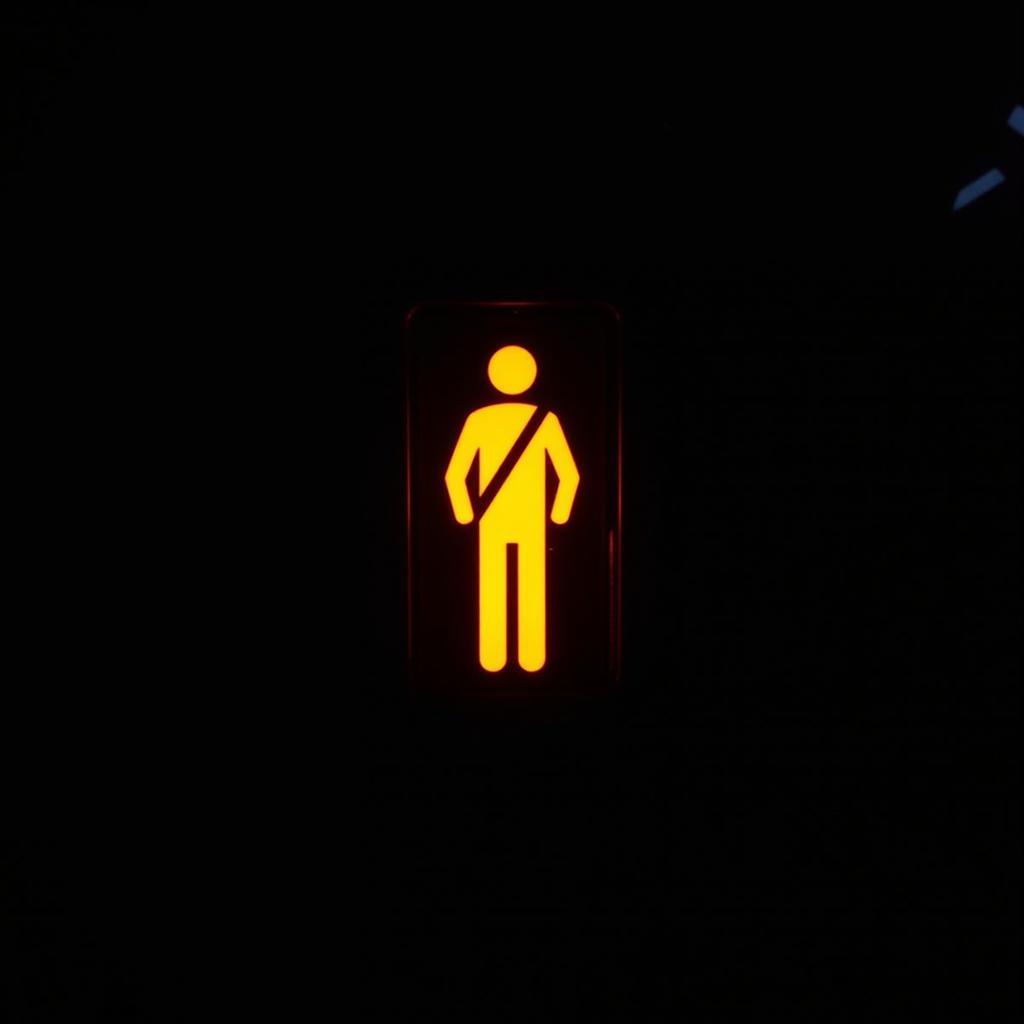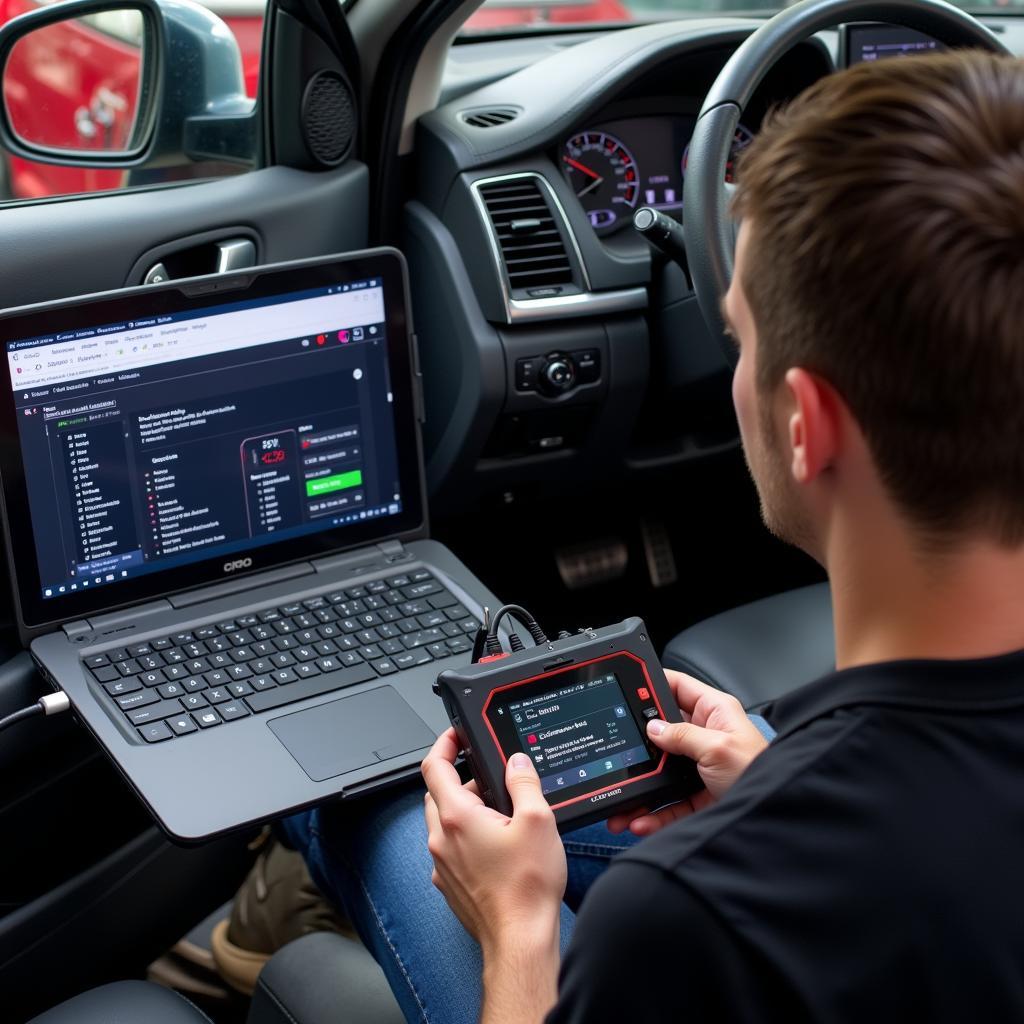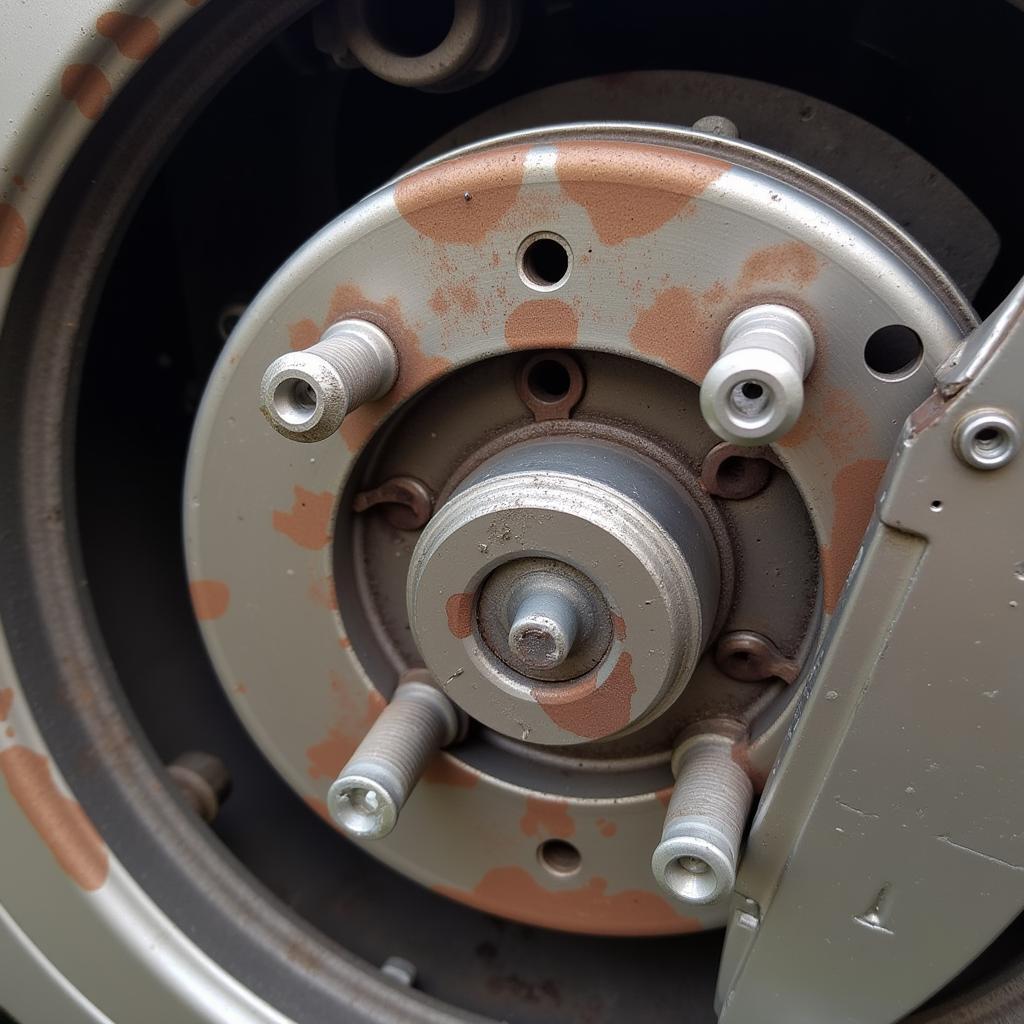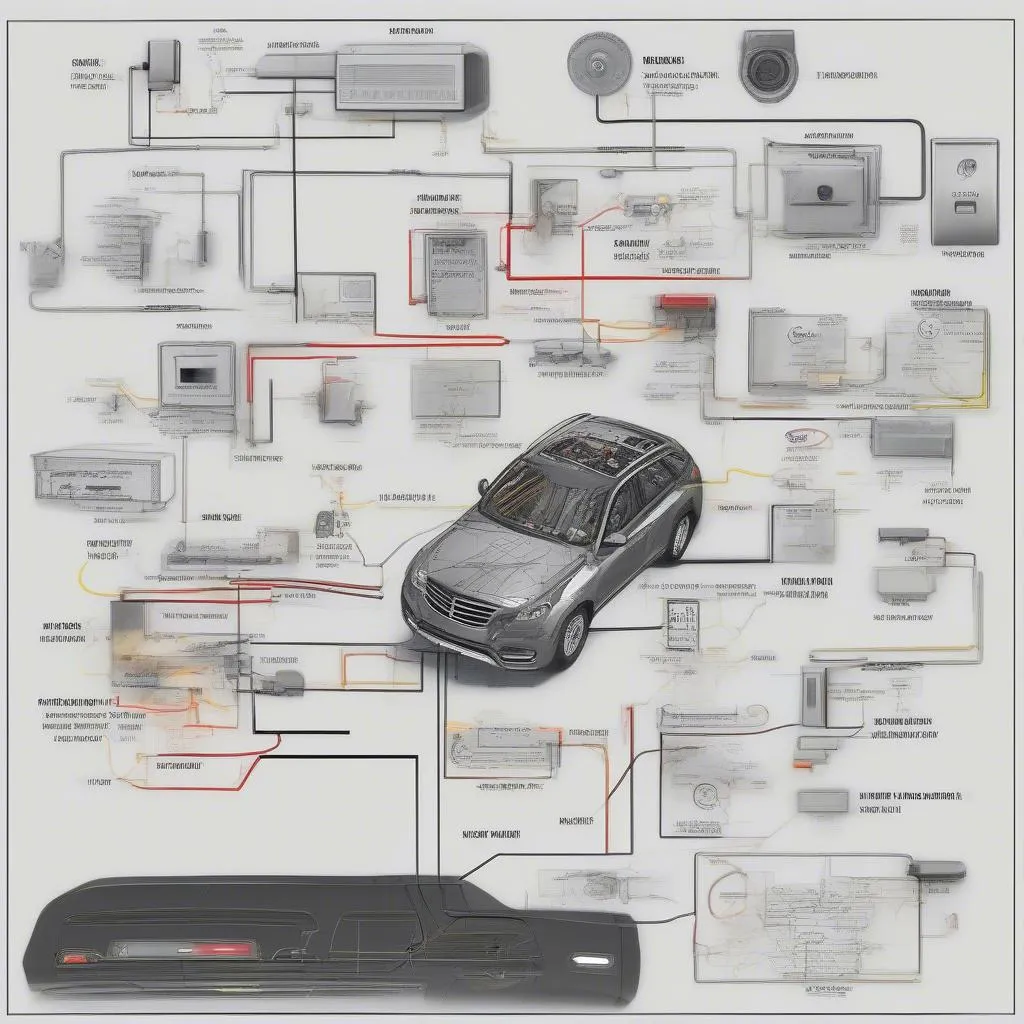The passenger seat belt warning signal is a crucial safety feature in modern vehicles, designed to encourage seat belt use and minimize injuries in case of an accident. However, there are instances when this warning signal might malfunction, causing unnecessary annoyance or even masking a genuine issue. This comprehensive guide will delve into the common causes of a persistent passenger seat belt warning signal and provide practical solutions for troubleshooting and fixing the problem.
Why is My Passenger Seat Belt Warning Light On?
There are several reasons why your passenger seat belt warning light might be illuminated, even if the seat is unoccupied:
- Faulty Seat Belt Buckle Sensor: The most common culprit is a malfunctioning sensor within the seat belt buckle assembly. This sensor detects whether the buckle is fastened and sends a signal to the car’s computer. If the sensor is damaged or dirty, it may send a false signal, triggering the warning light.
- Wiring Issues: Damaged, loose, or corroded wiring connected to the seat belt buckle sensor can also disrupt the signal transmission, leading to a constant warning.
- Issues with the Passenger Occupancy Sensor: Many modern cars have a Passenger Occupancy Sensor (POS) that detects the presence of a passenger. If this sensor malfunctions, it might incorrectly indicate that a passenger is present, activating the seat belt warning.
- Software Glitches: Like any other electronic system, your car’s computer system can experience software glitches. These glitches might cause the seat belt warning light to illuminate even when there’s no issue with the seat belt system.
 Passenger Seat Belt Warning Light On Dashboard
Passenger Seat Belt Warning Light On Dashboard
Diagnosing the Problem: A Step-by-Step Guide
Before attempting any fixes, it’s crucial to diagnose the root cause of the problem accurately. Here’s a systematic approach to help you identify the culprit:
- Check the Obvious: Ensure the passenger seat is indeed empty and there’s no weight on it. Sometimes, even a heavy object placed on the seat can trigger the sensor.
- Fasten and Unfasten the Seat Belt: Repeatedly buckle and unbuckle the passenger seat belt a few times. This action might help dislodge any temporary blockage in the buckle sensor.
- Inspect the Seat Belt Buckle: Carefully examine the buckle for any visible signs of damage, debris, or liquid spills. Clean the buckle thoroughly using a can of compressed air and a soft brush.
- Check the Wiring (If Comfortable): If you’re comfortable working with car electronics, visually inspect the wiring harness connected to the seat belt buckle. Look for any signs of damage, loose connections, or corrosion.
- Consult a Professional: If the problem persists despite your attempts, it’s best to consult a qualified automotive electrician or mechanic. They have the expertise and diagnostic tools to pinpoint the exact cause and recommend appropriate solutions.
Potential Solutions for a Persistent Warning Signal
Depending on the diagnosis, here are some potential solutions to fix the passenger seat belt warning signal:
- Seat Belt Buckle Replacement: If the buckle sensor is found to be faulty, replacement is often the most straightforward solution.
- Wiring Repair or Replacement: Damaged or corroded wiring will need to be repaired or replaced. It’s crucial to have this done by a qualified professional to ensure safety and proper functionality.
- Passenger Occupancy Sensor Recalibration or Replacement: If the issue lies with the POS, it might require recalibration or replacement.
- Software Update or Reset: In some cases, a software update or reset might be necessary to rectify any software glitches affecting the seat belt warning system.
 Mechanic Using Diagnostic Tool to Troubleshoot Seat Belt Warning
Mechanic Using Diagnostic Tool to Troubleshoot Seat Belt Warning
Remote Diagnostic and Programming Services: The Future of Car Repair
Advancements in automotive technology have paved the way for remote diagnostic and programming services. These services allow qualified technicians to remotely access your car’s computer system, diagnose problems, and even perform software updates or resets – all without the need for a physical visit.
Testimonial:
“I was hesitant about remote car diagnostics at first, but it turned out to be incredibly convenient and efficient. The technician quickly diagnosed my seat belt warning issue and even updated my car’s software – all while I was at work!” – John S., Satisfied Car Owner
Preventing Future Seat Belt Warning Issues
Here are some preventive measures to minimize the chances of encountering seat belt warning signal problems in the future:
- Regular Cleaning: Keep the seat belt buckle clean and free from debris or spills.
- Gentle Handling: Avoid yanking or putting excessive strain on the seat belt.
- Timely Inspections: Have your car’s electrical system periodically inspected by a qualified technician.
- Software Updates: Ensure your car’s software is up-to-date to benefit from the latest bug fixes and improvements.
FAQ
Q: Can I disable the passenger seat belt warning signal myself?
A: While it’s technically possible to disable the warning system in some vehicles, it’s highly discouraged. The seat belt warning signal is a critical safety feature, and disabling it can compromise your safety and that of your passengers.
Q: My warning light is intermittent. Is it still a problem?
A: Yes, an intermittent warning light can indicate a developing issue with the sensor, wiring, or other components. It’s best to have it diagnosed and addressed promptly.
Q: How much does it cost to fix a passenger seat belt warning signal problem?
A: The cost of repair can vary widely depending on the root cause and the specific vehicle model. Simple fixes like buckle cleaning or sensor adjustments might cost under $100, while more complex repairs like sensor or wiring harness replacement can range from $100 to $500 or more.
infiniti-seat-belt-warning-lamp-qx4
Q: Can extreme temperatures affect the seat belt warning system?
A: Yes, extreme temperatures, especially cold weather, can sometimes affect the sensitivity of sensors and electronics in the seat belt system.
Q: I recently had my car seats cleaned. Could that have caused the warning light?
A: Yes, it’s possible that cleaning agents or moisture might have affected the seat belt buckle sensor or wiring during the cleaning process.
The Importance of Addressing Seat Belt Warning Signals
A persistent passenger seat belt warning signal, even if seemingly minor, shouldn’t be ignored. Addressing the underlying issue promptly not only ensures the proper functioning of your car’s safety systems but also helps avoid potential hazards on the road. By understanding the potential causes and solutions, you can make informed decisions about troubleshooting and resolving the issue, keeping your vehicle safe and your passengers secure.



